NORTH WALES COAST RAILWAY:NOTICE BOARD
Rheilffordd arfordir gogledd Cymru: Hysbysfwrdd
11 January 2021





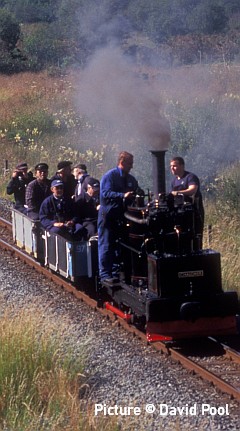
Forthcoming events
(see also our Calendar page for venues)
Note: we have removed all entries relating to meetings as the events are cancelled.
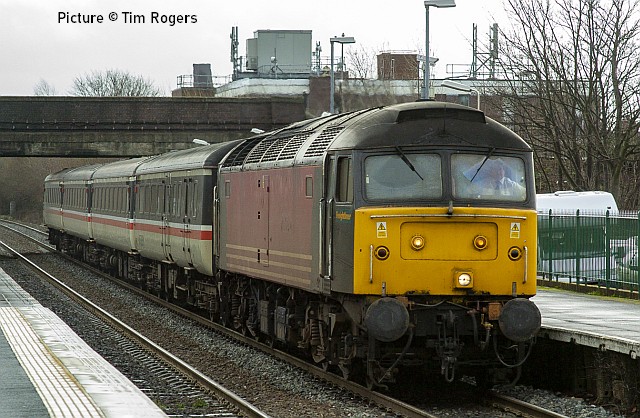
47 805 calls at Flint with the 10:03 Manchester Piccadilly to Holyhead on 7 July 2005. A Freightliner loco in Virgin livery on an Arriva Trains Wales train formed of British Rail Intercity-liveried coaches (Tim Rogers).
Transport for Wales notes
This week (12-15 January) sees four days (Tuesday - Friday) of class 67/mk4 testing on the Coast as trains 3J91 / 3J92. During these quiet Covid19 times it's actually good to do tests/staff training as stations are nearly deserted meaning people won't try and board the trains!
We've been told that following the scrapping of the Grand Central Blackpool-London services, TfW is considering taking at least two 'extra' mk4 sets, with a possibility of more should Cross Country not be taking any for their proposed replacement of some Voyager services between Birmingham and Edinburgh via Manchester, with mk4s and class 90s. Let's see what pans out in the coming months; these ideas often falter, but it c
It is hoped to get the current three mk4 sets into trafficas son as possible, as leaving them idle has created all kinds of issues, with the main one being damp/water ingress.
The current issue of Today's Railways magazine has an interesting article about the new trains that are on order.
Staniers at 6A - by Peter Neve
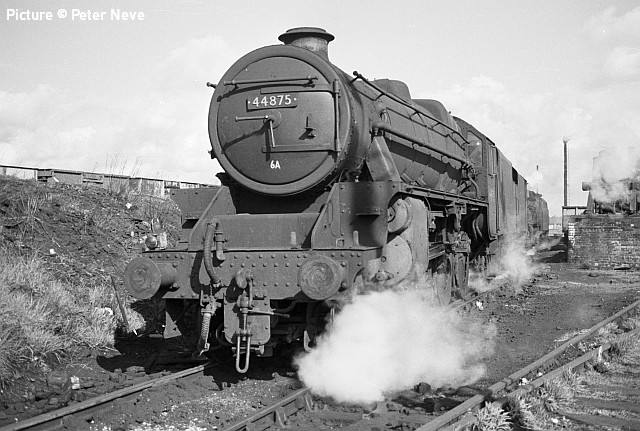
Some steam era photographs taken at Chester (6A) motive power depot during the school holidays in 1966 and 1967, with a few notes to accompany each image (largely based on information from the Internet). I hope the current lockdown measures will not continue for too long and we can get back to photographing train movements and, in my case, building a new railway station.
Above: Stanier 'Black 5' 4-6-0 44875 stands in the queue on the coaling road at on 29 March 1967. 44875 was only weeks away from being withdrawn (20 May 1967) and was subsequently cut up at Cohens (Morriston yard) in September of that year. The locomotive had been transferred to Chester from Llandudno Junction (6G) in October 1966 when that shed closed.
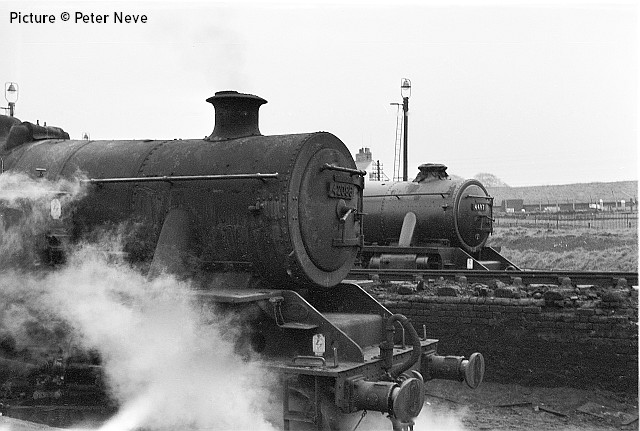
Fairburn 2-6-4T 42086 stands at the coaling stage on 6 April 1966 having been busy on the Chester to Birkenhead roster. 42086 was built in 1951 and was initially assigned to Brighton shed. It was withdrawn from traffic on 1 April 1967 and cut up at Cohens (Kettering) in October of that year. In the background is Stanier 'Black 5' 4-6-0 44971, which had been placed in store at Chester following its transfer from Mold Junction (the 6B shed code plate and smokebox numberplate are still both in place). Shortly after this photograph was taken, 44971 was briefly transferred to Llandudno Junction shed, and just before this was closed in October 1966 moved to Shrewsbury. Shrewsbury closed in March 1967 and the engine was transferred to Lostock Hall from where it was withdrawn on 3 August 1968.
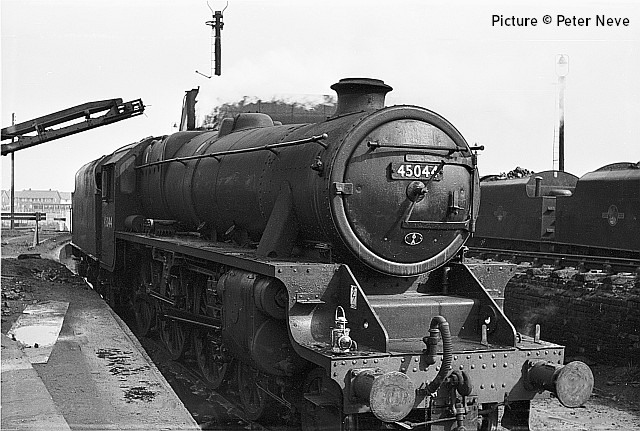
A Chester engine for the last three years of its working life, Stanier Black 5 4-6-0 45044 stands waiting to be coaled on 6 April 1966. 45044 was withdrawn from Chester in October 1966 and cut up at Cashmores (Great Bridge yard) in August 1967.
Footnote: Fairburn 2-6-4 42086 was a regular performer on the Chester to Birkenhead run. Did it ever haul the Paddington to Birkenhead train over the last leg of the journey? I wonder if any of your readers could shed more light on this?
Llangollen Diesel scenes - by Ken Robinson

I remember the class 20s working double headed trains on the Llangollen Railway back in 1999 - their whistling filled the Dee Valley as they made their way up to Glyndyfrdwy and Carrog. Above, 20 020 and 20 042 heading towards Glyndyfrdwy on 4 July 1999.
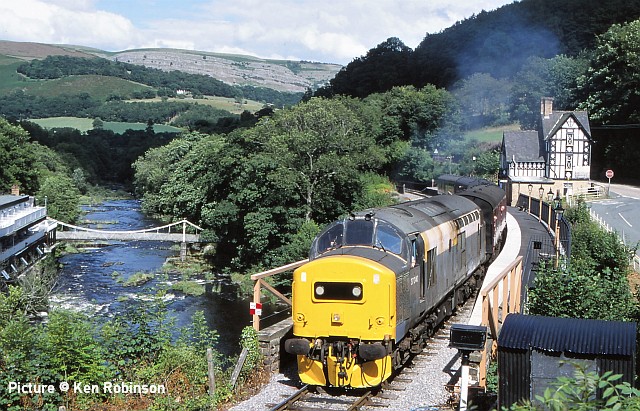
Another favourite, and very popular diesel on the Llangollen Railway was 37 240. Having arrived looking quite worse for wear in its 'Dutch' livery in the summer of 2002, 37 240 was started up in early 2003 and put into service towards the middle of that year. Attached is a photo of 37 240 noisily departing Berwyn on 19 July 2003. 37 240 left Llangollen for Boden Rail in December 2018.
Problem at Gaerwen, 1985 - by 'Skimpler'
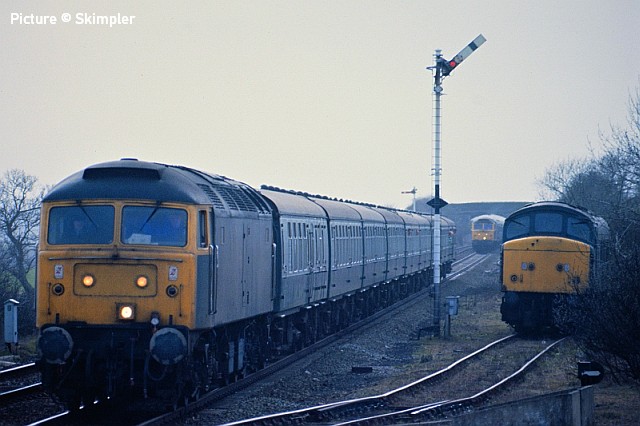
On 31 March I had been on a road bridge just west of Gaerwen 'getting' the Sunday afternoon trains, in the good old days of loco hauled services. It was the first public bridge after Gaerwen, for anyone who know the area, by the up distant signal.
45 026 turned up on what I have recorded as 1A27, what I think was a relief to the boat train but I may be wrong - it would have to have been Easter for an extra train like that, and it was a Peak on Mk1's. If anyone knows better I'd be interested to know. Anyway, the point is it was going very slowly and came to a stand when the train was about half way under the bridge and there it stood for a while with a good number of heads out of the train windows. I hung around for a while to see what happened.
Some time later, one of the coach doors opened towards the back of the train, someone threw a Samsonite case out onto the grass bank and then jumped out after it, leaving someone else to close the door. This man, probably in his 20s, then scrambled along the bank with his case and eventually up over the wall I was watching from. He came straight up to me and asked, "Which way is London?", I pointed up the road towards Gaerwen and said "that way". Off he went.
A while later, 47 608 with train 1A52, Holyhead to London Euston (certain of that one) came creeping up behind the first train and buffered up. I decided to make my way around to Gaerwen to see what would happen next. Once I was in Gaerwen, the two trains came creeping down to the Home signal and stopped. Not long after, 47 591 arrived light from the Bangor direction, probably from Llandudno Junction. It crossed over, collected the dead 45 and dumped it in the Up refuge siding, then attached to the train taking over from the disgraced Peak. The picture shows the scene as it has unfolded. 45 026 in the siding, 47 591 setting off with the train it has just rescued and in the distance is 47 608 with 1A52 which will now have to wait its turn for the Up signal.
Gobowen ticketing
Martin Evans writes: 'With the pictures at Gobowen which were shown on the 28th December Notice Board comment was made of the preparation for Ticket Machines at the station. However, despite this development I would wish to confirm as a Director of Severn Dee Travel Ltd who operate the booking office on behalf of Transport for Wales Ltd that the office will be open and continue to operate offering our usual services to rail passengers. It is appreciated that we are closed at present due to the Covid-19 restrictions but once things begin to improve we will be reopening. I trust this clarifies this matter Charlie and avoids any confusion that may arise due to our present closure.'
From Dave Sallery's archive
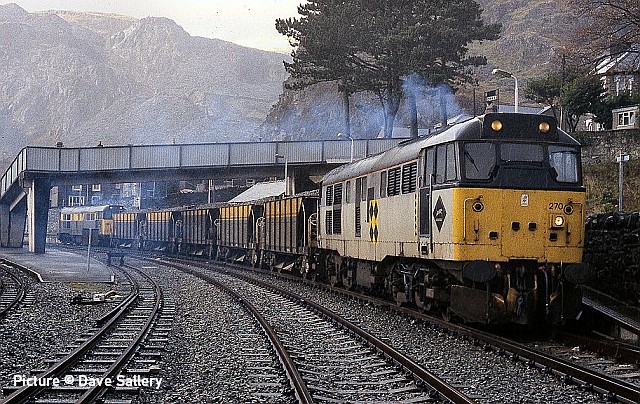
31 270 on a re-ballasting train for the Trawsfynydd branch. This was prior to reopening the line to remove all the nuclear flasks. 14 November 1993.
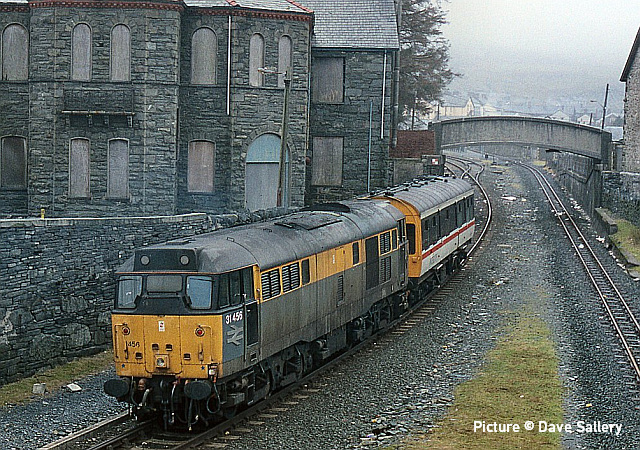
31 456 with an inspection saloon en route to to Trawsfynydd, 10 February 1994.
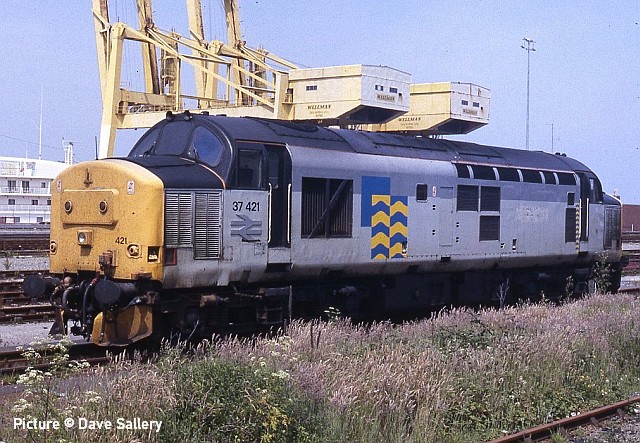
37 421, still in 'petroleum sector' livery on 29 June 1993, in the disused Freightliner terminal at Holyhead. It was there because it was the only place in Holyhead with a pit to access its brake blocks.
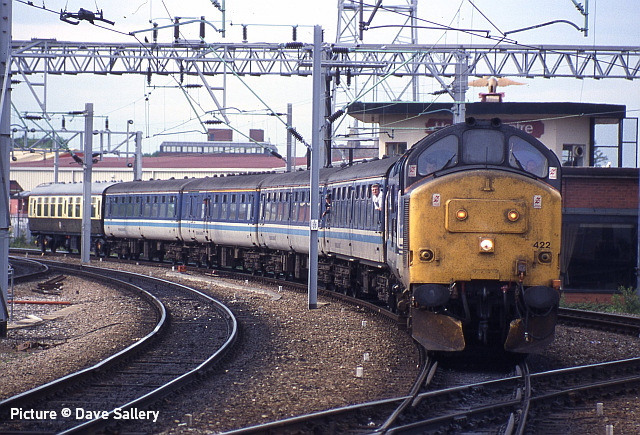
37 422 Robert F. Fairlie arriving into Crewe from Bangor, 5 June 1996. On the rear, a summer strengthening coach hired from Riviera Trains.
Lasy Days, 1965 - by Chris Magner
Fifty-six years ago it was the last full day of the Ruabon Barmouth line on Saturday 16th January 1965. Credit to all the staff that all the services ran. Many staff who had given in some cases a lifetime of service were heartbroken as redundancy loomed. It is worth noting that Assistant Divisional Manager Oliver Veltom wrote to all major employers along the line asking them to employ redundant railwaymen.
On 16 January 1965, Ivatt class 2 No.46521 worked the last Bala to Barmouth train and on arrival No.46446 worked the last Barmouth to Dolgellau shuttle train. On arrival at Dolgellau a crowd gathered and the Welsh National Anthem was sung before 46446 left for Penmaenpool shed. Fireman Terry Lloyd from Penmaenpool was one of the crews who took Nos 46446 and 46521 to Machynlleth MPD on the Monday morning. He said it was the saddest day of his railway career. The crews had to return by bus. Also on that Monday 18 January, No. 80104 took the remaining wagons from Bala and Ivatt tank No.41204 the passenger coaches.
Looking back with David Pool - Welsh Highland 2010-2014
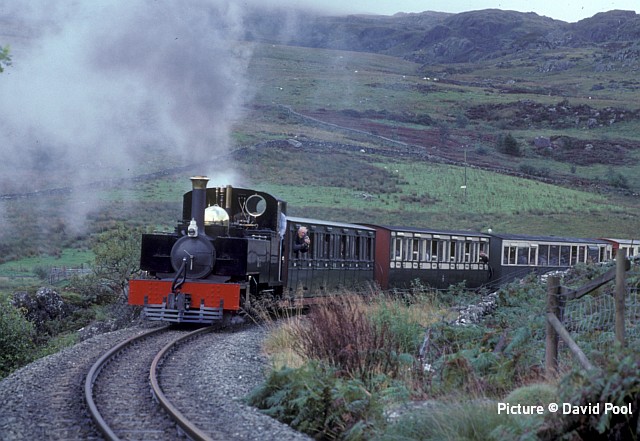
The newly built Lyd hauled its first passenger carrying train on the Welsh Highland Railway on 11 September 2010 between Dinas and Beddgelert. It was painted in unlined black, the intention being to change the livery at some future date. The location is near Ffridd Isaf, on the approach to Rhyd Ddu, and Paul Lewin is on the footplate.
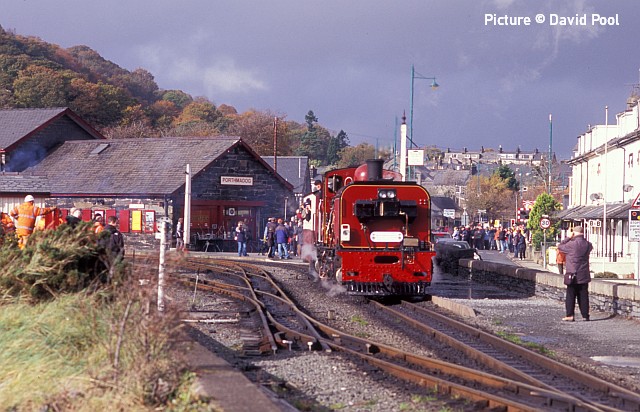
30 October 2010 was another memorable occasion, when the first train from Caernarfon to Porthmadog marked the full opening of the revived Welsh Highland Railway. Garratt 138 with the VIP train was welcomed by an enthusiastic crowd at the Ffestiniog Railway’s Harbour Station, and we even got full sun for our photographs!
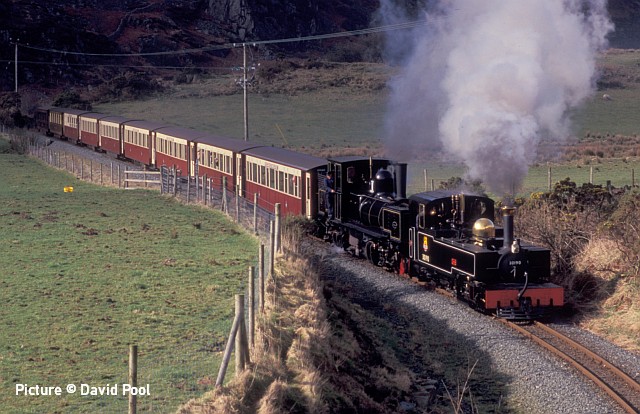
I doubt whether this combination of locomotives will ever be repeated. On 24 February 2011 Lyd and K1 were double heading an early season train at Castell Cidwm. Lyd had received a fictional British Railways lined black livery, with a number 30190. If the Lynton and Barnstaple Manning Wardles had survived to the 1950s, it was suggested that they might have received BR numbers. Since Lyd was to be numbered E190 following the sequence of the other L&B locomotives, 30190 (which was not carried by any ex Southern Railway locomotive) would have been an appropriate choice. By 7 September 2011, Lyd had been repainted in the Southern Railway green which she has carried to date.
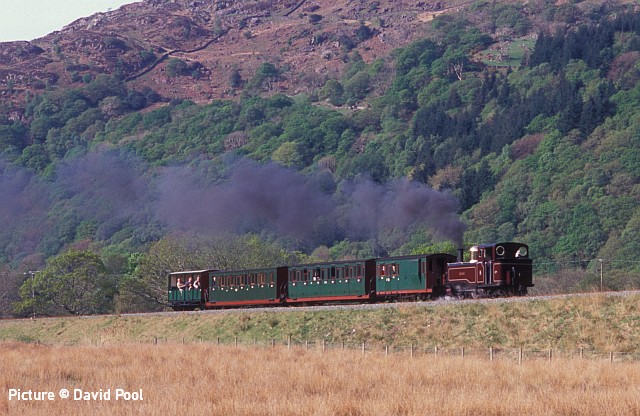
Locomotives from the Ffestiniog Railway are usually run bunker first travelling from Porthmadog on the Welsh Highland Railway. Single Fairlie Taliesin, a new locomotive which was completed in 1999, is making good progress up Nantmor Bank on 24 April 2011, with a rake of Ffestiniog coaches. The original Single Fairlie Taliesin was built in 1876 and never ran after 1924, being eventually scrapped.
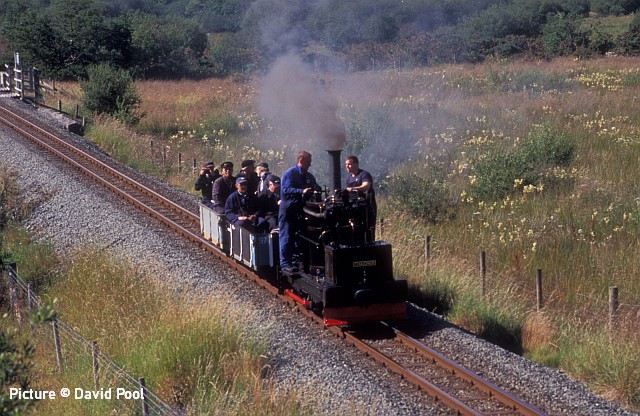
On 23 July 2011 the vertical boilered Chaloner was visiting the WHR. Built by De Winton of Caernarfon in 1877 for the Pen yr Orsedd Quarry at Nantlle, where it worked until 1960, it is based now at the Leighton Buzzard Light Railway. On this particular day permission had been granted for Chaloner to take a train unaided from Dinas to Porthmadog, although the length of such a journey was likely to be a challenge for it. It set off after the last service trains had run, and Upnor Castle was given the task of following it at a distance, in case some rear end assistance was required on the gradients. Chaloner proved to be quite capable of handling its load, and is making good speed near Betws Garmon.
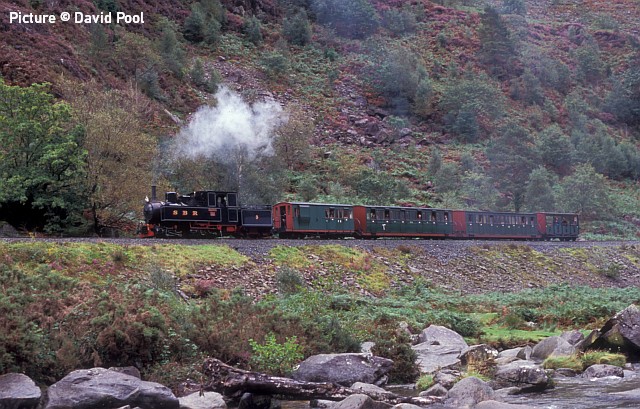
Statfold Barn Railway has often provided visiting locomotives for the WHR. On 10 September 2011 their Jatibarang 9, a Mallet 0-4-4-0T built by Arnold Jung in 1930 for a sugar mill in Indonesia, had just been returned to working order, and was photographed in the Aberglaslyn Pass.

At a Steam Gala at Dinas on 8 September 2013, another interesting Statfold Barn visitor was on display. On this occasion they had sent Minas de Aller 2, built by Corpet-Louvet in 1884 and used in coal mines in Spain. It has a very unusual indirect drive comprising cranks and levers from the cylinders to the driving wheels.
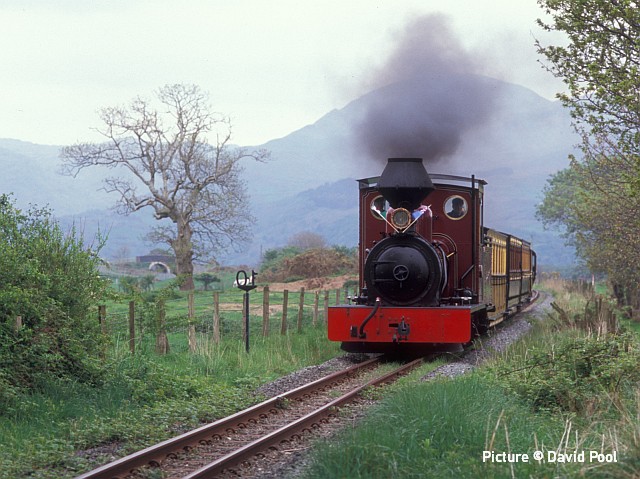
In 2014 a Statfold visitor was Fiji, a Hudswell Clarke locomotive built in 1912 for a sugar mill in Fiji. Being the first of 30 locomotives sent to Fiji, it had some status, and survived when the others were scrapped. It was then fitted with a diesel engine in the tender and used on a tourist railway. It was eventually sold, and returned to the UK in 2012 to be restored at Statfold as a steam locomotive. On 2 May 2014 it was named Fiji at Porthmadog by the Fijian High Commissioner, and was later that day photographed at Cynfal returning from Pont Croesor.
North Wales Coast home page | Archive | Previous Notice Board